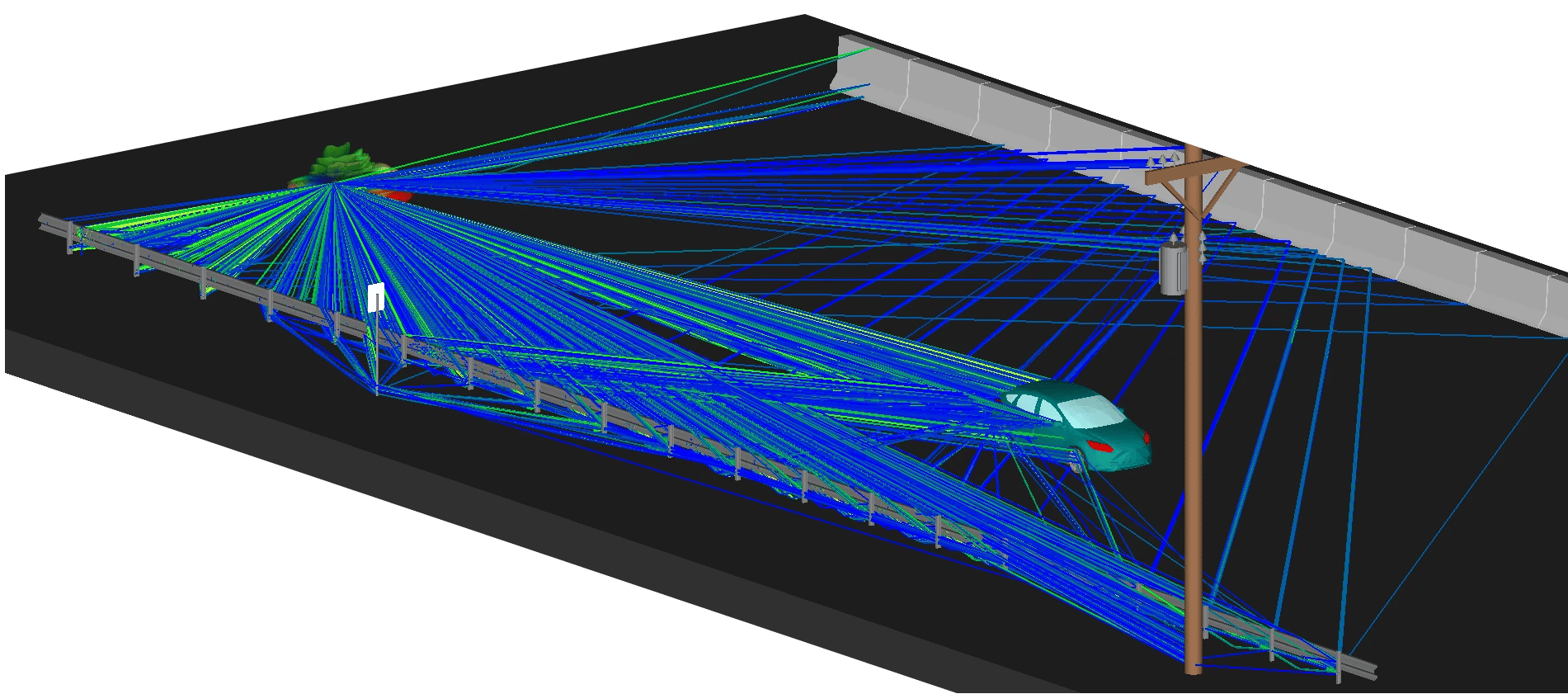- Products & Solutions
- WaveFarer
- Near field propagation method
Near Field Propagation Method in Automotive Radar Simulations
Calculate scattering from target vehicles and other surfaces, including multipath interactions with the ground and structures, using ray-tracing algorithms and physics-based calculations specifically adapted for radar applications.

WaveFarer’s ray-tracing technique combines traditional far field RCS methods with those used for urban and indoor propagation in order to provide a unique solution for the challenges facing engineers working on closer-range applications such as automotive radar. Further, near field scattering techniques increase accuracy at millimeter wave frequencies, capturing the effects of detailed features that impact a target signature.
Near Field Effects
Multiple near field propagation characteristics are accounted for in WaveFarer’s automotive radar simulation technique, increasing accuracy.
First, transmitters emit spherical waves, modified by complex antenna radiation patterns, causing non-uniform wavefronts to be incident on target objects. This is an enhancement over traditional far field RCS methods that use a plane wave excitation with a constant phase front to illuminate targets. This leads to more accurate phase information at the receiving antennas.
Second, WaveFarer’s surface integration calculations have been formulated to allow receivers and secondary scatterers to be in the near field and Fresnel regions of the target. This is required because the far field region of a vehicle at 24 and 79 GHz is several kilometers, extending well beyond the typical range for an application like automotive radar. This is another enhancement over traditional far field RCS methods, because it removes the assumption that the receiver is in the far field region of the target.
Ray-Tracing Interactions
Ray-tracing techniques accumulate reflections, diffractions, and transmissions along a ray’s path as it interacts with the ground, target, and secondary scatterers. WaveFarer supports up to 30 reflections, 3 diffractions, and 7 transmissions along any single ray path. For paths that interact with scattering objects, these are then incorporated into surface integrations on target surfaces based on physical optics (PO) and the method of equivalent currents (MEC), which incorporate scattering effects into the paths. In addition, paths may include diffuse scattering from rough surfaces, incorporating additional effects from clutter that are critical at millimeter waves and higher frequencies.
Atmospheric Effects
Attenuation due to absorption by water vapor and oxygen molecules is accounted for in WaveFarer’s propagation model. Users have the ability to use a vacuum, standard atmosphere, or to specify custom values for pressure, temperature, and relative humidity.

Atmospheric absorption can cause significant attenuation of
signals at frequencies above X-Band.
For More Information:
Return to the WaveFarer main product page to explore more about the software's features and technology for fast and accurate analysis of repeatable drive test scenarios.
Save time and reduce costs.
Contact Remcom today for a customized solution to your most complex electromagnetic challenges.
Request a Quote